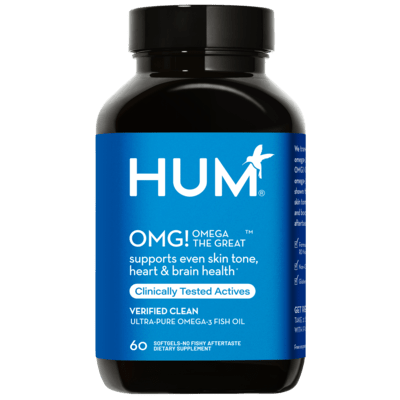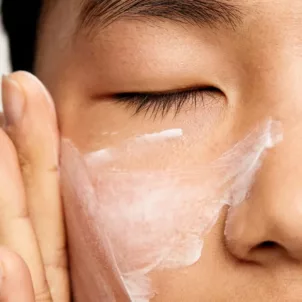What is skin cycling? Dermatologists break down everything to know about the popular skincare practice—including the benefits and the drawbacks.
It seems like there’s a new beauty trend going viral on the internet every day. And while most are debunked by dermatologists (think: using at-home filler pens, applying raw lemon juice to your skin, and putting toothpaste on pimples), one trend has earned the approval of many skin professionals. It’s called skin cycling, and it’s captured the attention of skincare gurus and beginners alike.
The practice involves a simple, easy-to-follow routine that encourages people to use active skincare ingredients carefully and sparingly over an extended period of time versus all at once. This is a large departure from the advice to load up on active skincare ingredients and exfoliate, exfoliate, exfoliate (we’re cringing just thinking about it, TBH).
Skin cycling is a gentler approach that can work for nearly anyone. So what is skin cycling exactly and how can you use skin cycling in your routine? We spoke to dermatologists to get their honest thoughts on the trend and how to do it. Here’s what they had to say.
What Is Skin Cycling?

So what even *is* skin cycling? “Skin cycling refers to rotating different products each night to prevent irritation that can occur with too many active ingredients and gives the skin an opportunity to recover,” explains Marisa Garshick, MD, FAAD, a board-certified dermatologist based in New York. “It works to prevent over-exfoliation by switching out products in your skin-care routine and giving the skin a chance to recover.”
The problem with overdoing your skincare is that you risk damaging your skin barrier (the outermost layer of your skin), which can lead to dryness, redness, irritation, and breakouts.
The term skin cycling was originally coined by dermatologist Dr. Whitney Bowe on TikTok. Bowe recommended a four-day skincare routine to help people use their skincare products safely and effectively.

Skin Cycling Routine

So, what exactly is the skin cycling routine? Here’s the breakdown from Dr. Bowe’s video. First, you should start by washing your face every night with a gentle cleanser. After that, follow this guide:
- Night one: Exfoliate (preferably with a chemical exfoliant, like glycolic acid, lactic acid, or salicylic acid)
- Night two: Retinol (or prescription retinoid, like tretinoin or Retin-A)
- Night three: Recovery with moisturizer
- Night four: Recovery with moisturizer
- Repeat
It should be noted that these recommendations are for the nighttime. That’s because active skincare ingredients can make your skin more sensitive (to the sun or to pollution in the air, for example). During the daytime, make sure you apply your antioxidant serum and SPF to protect your skin from sun damage.
Benefits of Cycling for Skin

Sounds simple, right? That’s the idea. Using actives sparingly and allowing your skin to take a break can help you in the long run. Plus, it protects you from any potential irritation or damage. Read on to learn more benefits of skin cycling.
It’s a Safe Way to Introduce Actives to the Skin
The world of skincare actives is exciting. These ingredients are targeted to treat a certain condition and work extremely well. However, since they’re generally quite strong, your skin may need some time to adjust. That’s where skin cycling comes in. “It’s a great way to introduce actives in the skin, especially if you are overwhelmed with what to use and how often to use it,” says Mamina Turegano, MD, FAAD, a board-certified dermatologist, internist, dermatopathologist, and co-founder of Skintap.com based in New Orleans. “Retinols and chemical exfoliants are important active ingredients for skin health, including texture, even skin tone, and fine lines and wrinkles.”
It’s Beginner-Friendly
There’s no doubt about it: Skincare can be complicated. One of the benefits of this four-day cycle is that it works for anyone—regardless of your knowledge of skincare. “Starting with a skin cycling regimen is a good starting point for most people and prevents people from potentially over-exfoliating their skin,” Dr. Turegano says. Still, it’s important to be careful about what you’re using on your complexion. If you’re using a super-strong retinol or chemical exfoliant, (or if you just have sensitive skin), you’re still at risk of doing some damage to your complexion, Dr. Turegano says.
It Protects Your Skin Barrier
The biggest benefit of skin cycling? It protects your skin barrier—which is key for overall skin health. Exfoliating too often can compromise and even damage the skin barrier, leading to dehydration, redness, irritation, and acne. “Skin cycling prevents irritation and over-exfoliation, allowing you to be consistent with key active ingredients,” Dr. Garshick says. “By helping to support the skin barrier, skin cycling keeps the skin looking healthy and refreshed.”
Who Shouldn’t Try Skin Cycling
While skin cycling is touted as a great routine for anyone, there are people who may not benefit from the trend. “Many people, including those who deal with acne, may need to use a retinol or prescription retinoid more frequently to get the benefits,” Dr. Turegano says.
Additionally, those with sensitive skin have to be mindful of the strength of their chemical exfoliant. “If the exfoliant is a higher strength, using it more than once a week may be too strong for them,” Dr. Turegano says.
In general, experts recommend going to a dermatologist to get a customized skincare routine based on your unique needs. While skin cycling appears to be trending, it’s actually quite common for dermatologists to create skincare regimens that involve using actives and taking breaks in between.
The Takeaway
Whether you’re new to the skincare scene or you’ve got a 12-step routine, it’s worth looking into skin cycling. It’s a tactical way to use active skincare ingredients without subjecting your skin to unnecessary irritation and distress. However, if you’re dealing with acne in particular, you’ll likely need to use retinol more often in order to see results.
Ultimately, skin cycling is a term to describe a safe, responsible skincare regimen. It may not work for everyone—which is why it’s best to see a dermatologist to get a routine tailored to your unique needs.
But if you’re looking for a way to refresh your skincare routine, it’s worth giving skin cycling a try. Sticking to a consistent regimen is the best way to get a glowing, clear complexion.










